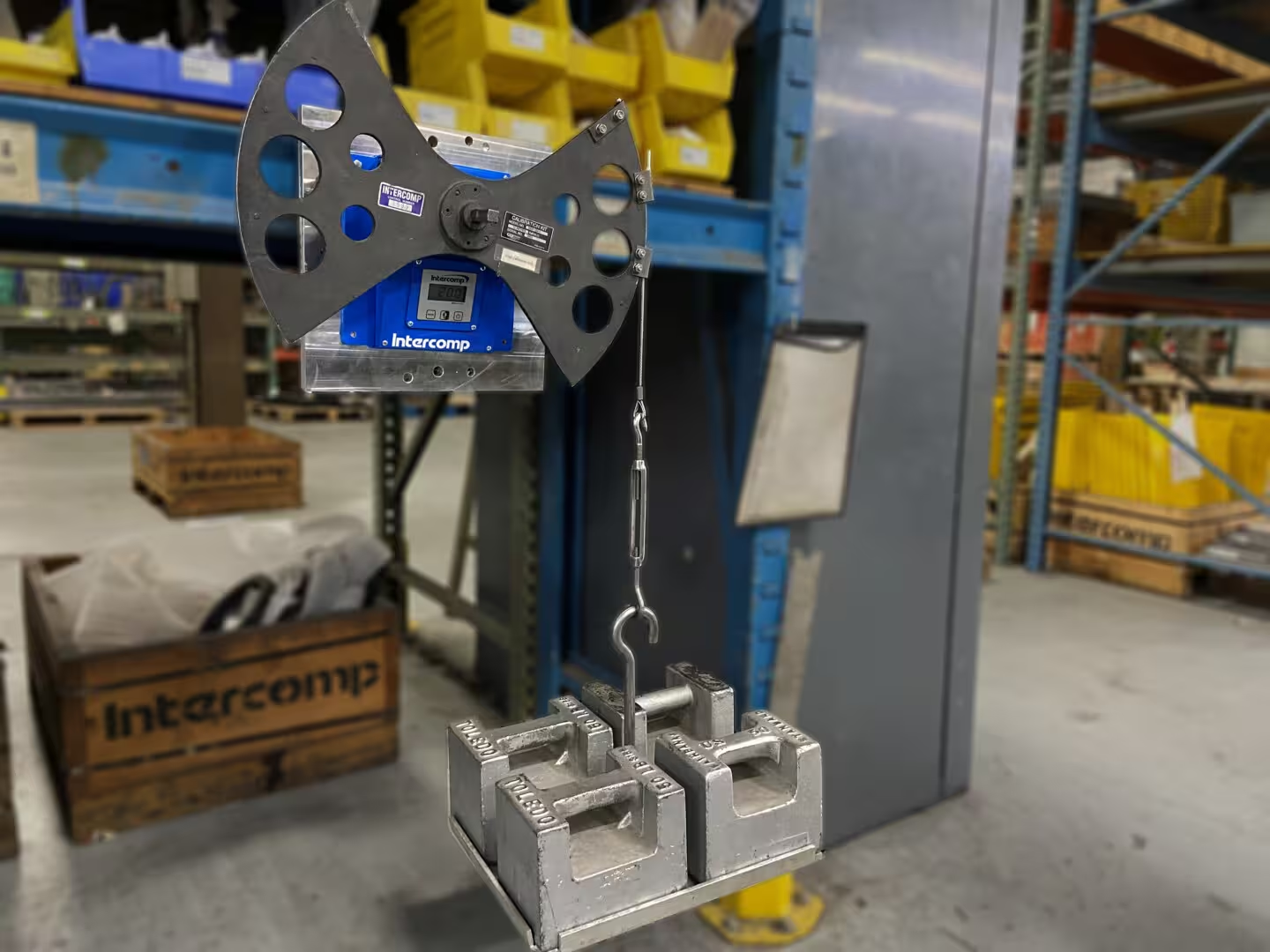Have you ever wondered what the difference between a $20 and a $200 torque wrench really is? Are the more expensive wrenches more accurate than the cheaper ones? Well, we’d like to know, too. So we’ve gathered up some examples to check with our Intercomp Digital Torque Wrench Tester and see how their accuracy compares to one another. So, come with us as we find out.
If you watched the LS5.0 short-block assembly video, you know that we like to check the calibration of our tools before we use them. But to have faith in those checks, we need to know that the checker itself is calibrated. We went over this in our Tool of the Month article on the Intercomp Digital Torque Wrench Tester.
At the factory, the tester is calibrated using a dead-weight method, which uses NIST-certified weights, hung from a fixed-length arm to calibrate the strain gauges in the tester. That calibration certificate is included with the tester, and the unit’s calibration can be recertified at the factory in the future. Our tester is within calibration, which is significantly more accurate than the advertised ranges of the tools we’ll be testing, so the Intercomp tester has our complete trust in this test.
We’ll be using one of the calibration sheets we drew up to record our tests at various torque values. We’ll then compare actual differences between wrenches along with where each wrench falls within the advertised tolerance range. For all of the wrenches in this test, they are advertised as +/- 4 percent, so the actual amount of variance allowed changes as the target torque value changes. Being 2 lb-ft off-target is out of spec at 25 lb-ft, but solidly within spec at 100 lb-ft.
The dead-weight calibration method uses a fixed-length arm an NIST-certified weights hanging from that arm for an extremely precise calibration method used on the Intercomp Digital Torque Wrench Tester.
Testing Click-Type Torque Wrenches
The first step in this test is to bolt our tester to a stable base. For us, that’s our workbench that we’ve sunk machine screw adapters into. This allows us to drop 1/4-20 machine screws through the Intercomp unit’s mounting holes and screw it down directly to the workbench. For the test, we’ll be aiming at four target torque values and testing each wrench five times at each value. We’ll then average those five values and convert them to a percentage.
The first wrench going on the tester is…
Click Here to Read the Full Original Article at DragzineDragzine…

